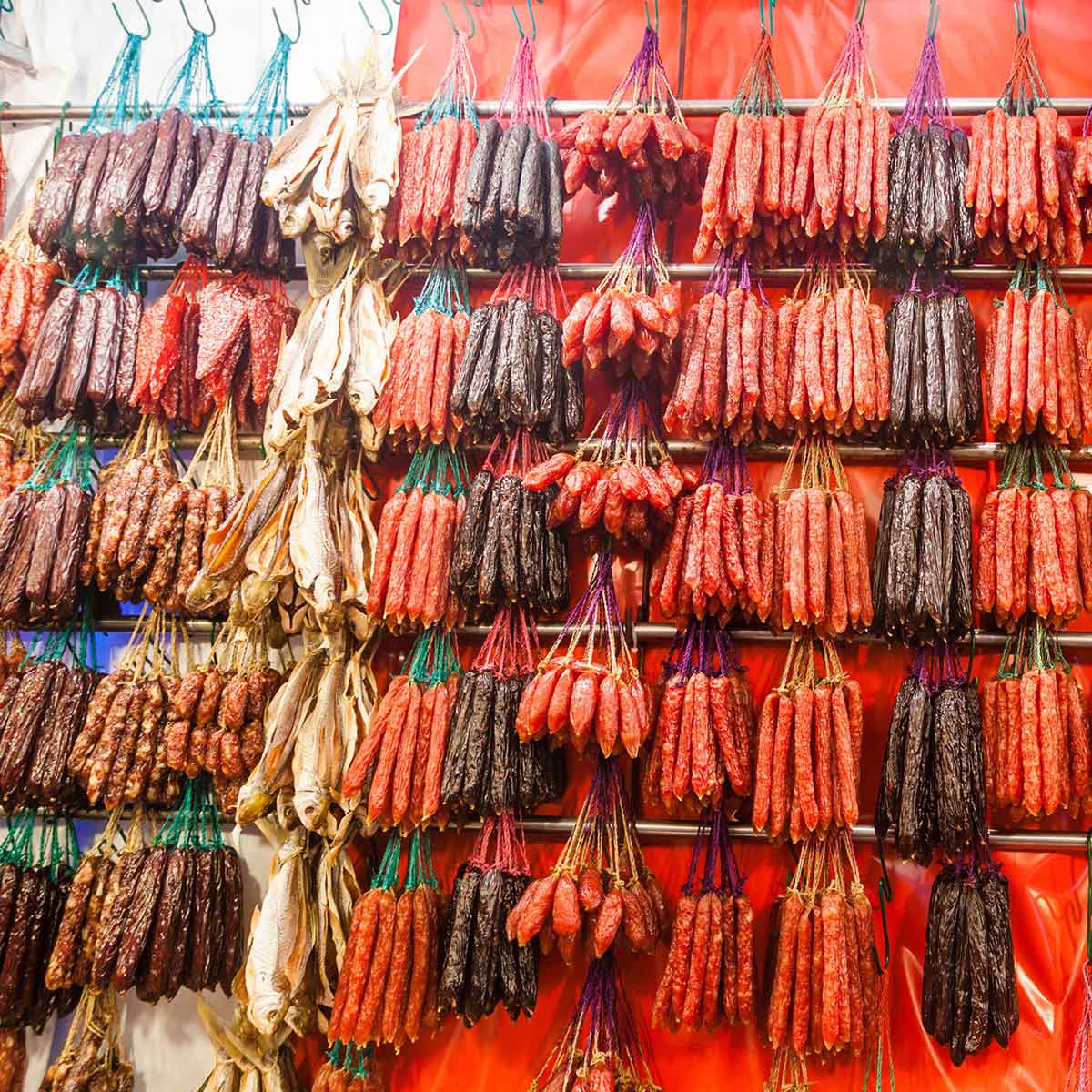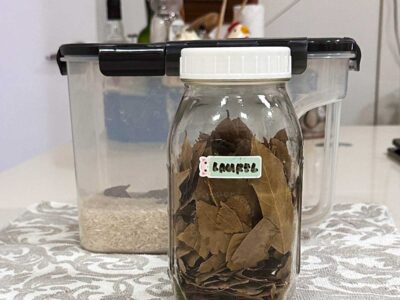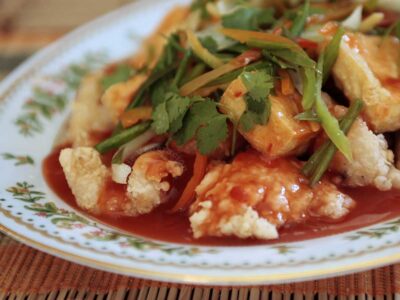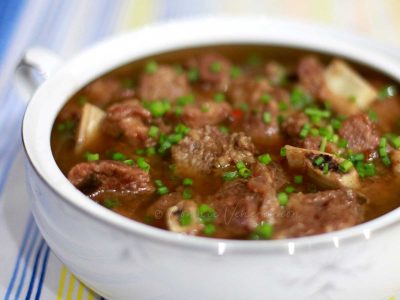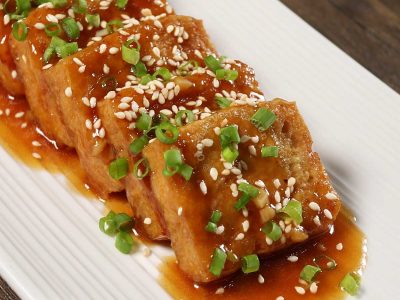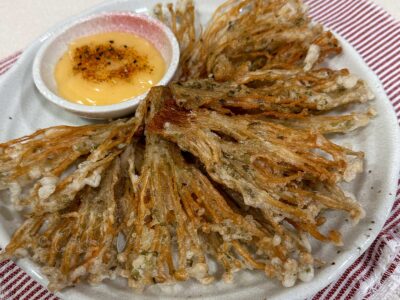If you’ve eaten yang chow fried rice, you’ve tasted Chinese sausage. It’s a common ingredient of stir fried noodles and claypot dishes too.
I still remember my first bite of Chinese sausage. It was enveloped in a soft and fluffy bun that had been steamed. I had no idea what the sausage and bread combo was called (I would learn many, many years later that it’s called lap cheong bun), but my taste buds did not care. The melted fat from the sausage drizzled down my chin and my mother had to wipe my face clean.
That was decades ago. As an adult, I have enjoyed Chinese sausage and its countless iterations in Taiwan, Vietnam and Thailand, and I am still smitten — more today, in fact, than I was as a child.
What is Chinese sausage?
It’s a term that encompasses an array of sausages from China where they have been made as early as 300-500 A.D. The Cantonese name is lap cheong. Not as well known outside China is a spicy variety from the Sichuan region.
Chinese sausage may be smoked and dried, or fresh. It can be fatty or lean. The variety made with pork and small cubes of fat is the most common but the best I ever tasted was made with duck liver.
What does Chinese sausage taste like?
That really depends on what the ingredients are, and where it originates. But if we’re talking about smoked and dried Chinese pork sausage known as lap cheong, it is, more often than not, a perfect balance of sweet and salty. Hovering in the background are seasonings that traditionally include rice wine and soy sauce.
Tips for buying Chinese sausage
When you go to an Asian grocery to buy Chinese sausage, know that there are many kinds. You’ll find short ones, fat ones, thin ones, and the color can range from chocolate-y to a dull red.
The shape and and color define the variety. The thin dark sausages are likely made with pork or duck liver. The dull red ones with bright white specks are most likely made with pork meat and fat.
It’s not easy to tell just by looking especially when the labels do not include any English language translation. It’s best to ask the shopkeeper to explain the differences between the sausages that are on display so that you can get exactly what you want.
Tips for storing Chinese sausages at home
Dried Chinese sausages are sold in vacuum-sealed packs. Check the expiration date first and know that, unopened, the sausages do not require refrigeration. Once you open the package and you’ve taken the number of sausages you need for a dish, wrap the remaining sausages tightly in cling film and keep in the freezer. Better still, if you own a vacuum sealer, reseal the remaining sausages. They will last longer that way.
How are Chinese sausages cooked?
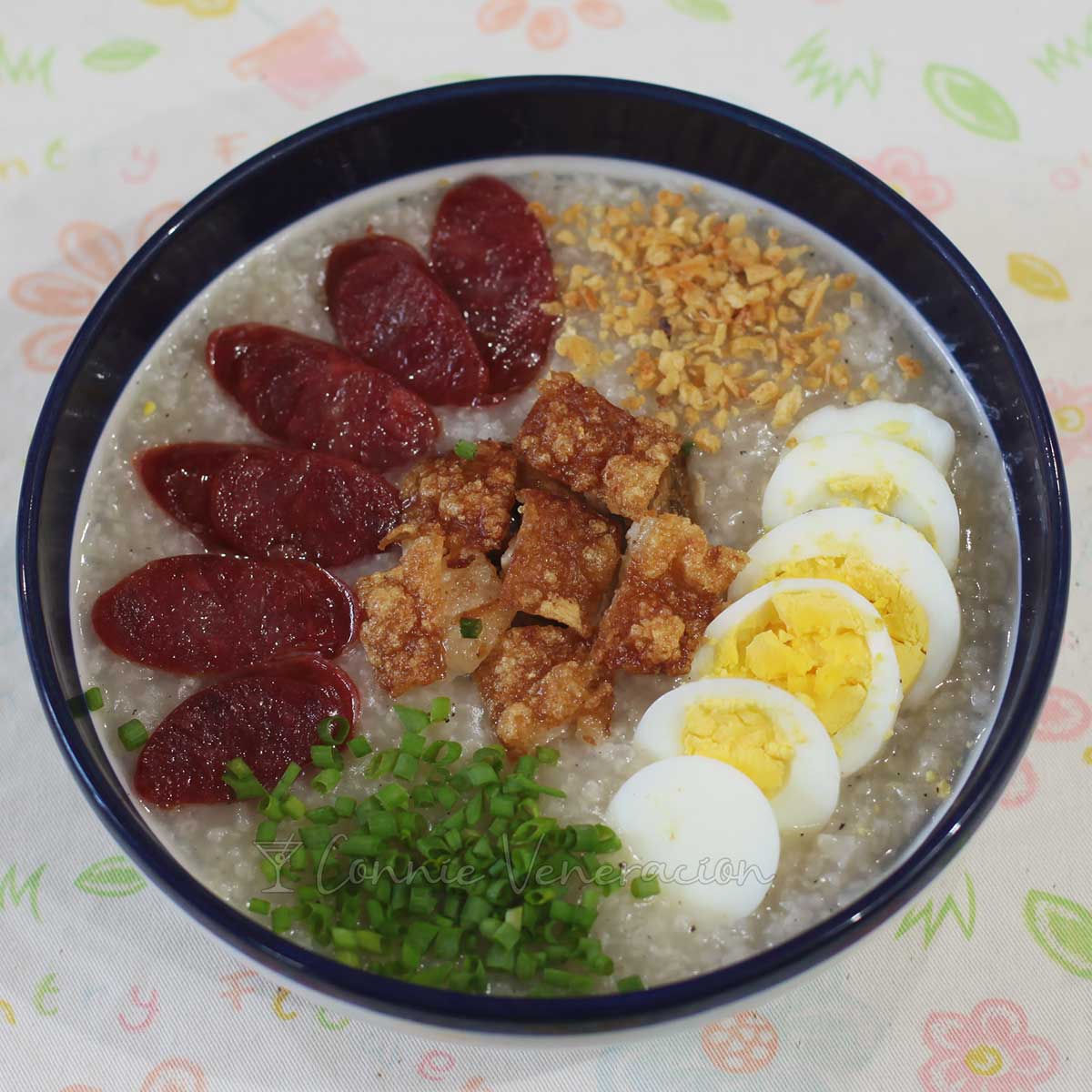
In, oh, so many ways. As filling for steamed bun, like the way I first experienced it. But the simplest way to cook Chinese sausages is to slice them and drop the slices with uncooked rice in a rice cooker. By the time the rice is done, the sausages will be too. And since the sausages will render fat in the heat, your rice will smell and taste wonderful.
Chinese sausages can be chopped too and included in stir fried dishes. It is one of the traditional ingredients of yang chow fried rice. They may be added to congee as well, mixed or or arranged as topping.

